By Rick VanSickle
Ilya and Nadia Senchuk, owners of Niagara’s Leaning Post Wines, have never been comfortable with being comfortable.
Together the couple has built their wine business — literally — from the ground up, slowly and methodically, thinking outside the box while establishing a unique terroir in the far west of Niagara that few thought possible. And they did it without any outside financial help along the way.
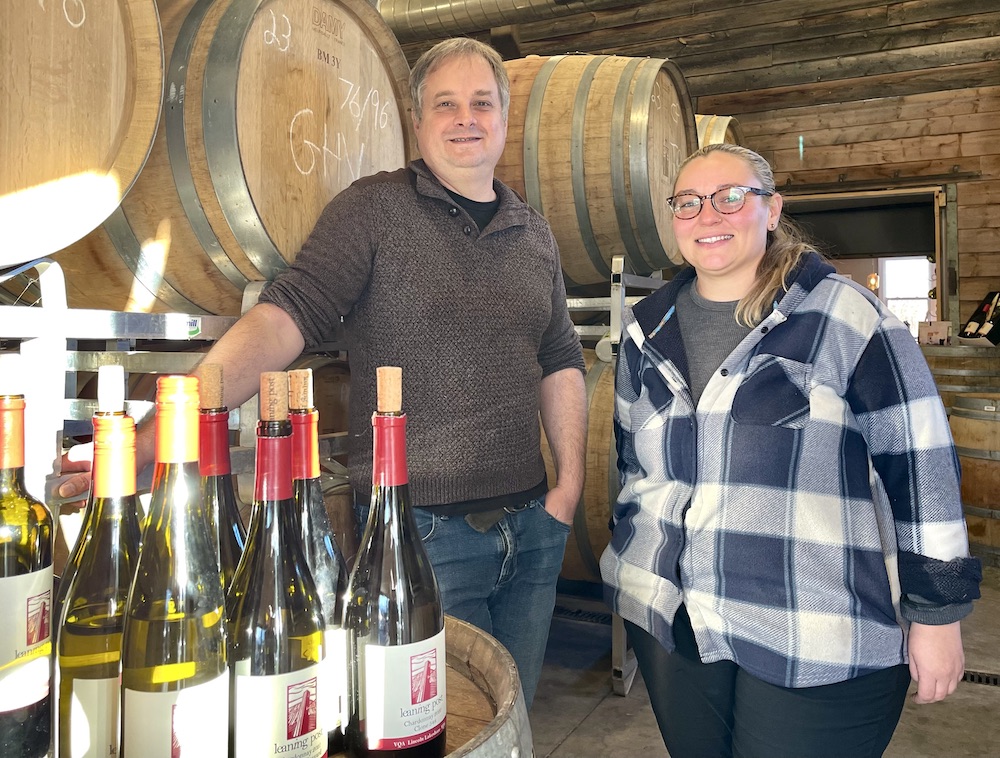
Winona was not a proven pocket for wine gold until the then-virtual brand, Leaning Post, was established 2011 after the Senchuks purchased their farmhouse nestled on 11 acres of land with the dream of starting the winery. The property included an abandoned vineyard and barn that could only be restored by what they call “crazy youths with more passion than brains.”
Through hard work and dedication, they have built a winery and tasting/retail facility that has surpassed even their wildest dreams. Neither Ilya or Nadia knew for sure what they had until after they planted grapes and made their first wines. The previously shunned land on the estate has proven to be a coveted location for the sort of wines they have championed since the early days of their brand — high-quality, vineyard-specific Pinot Noirs and Chardonnays.
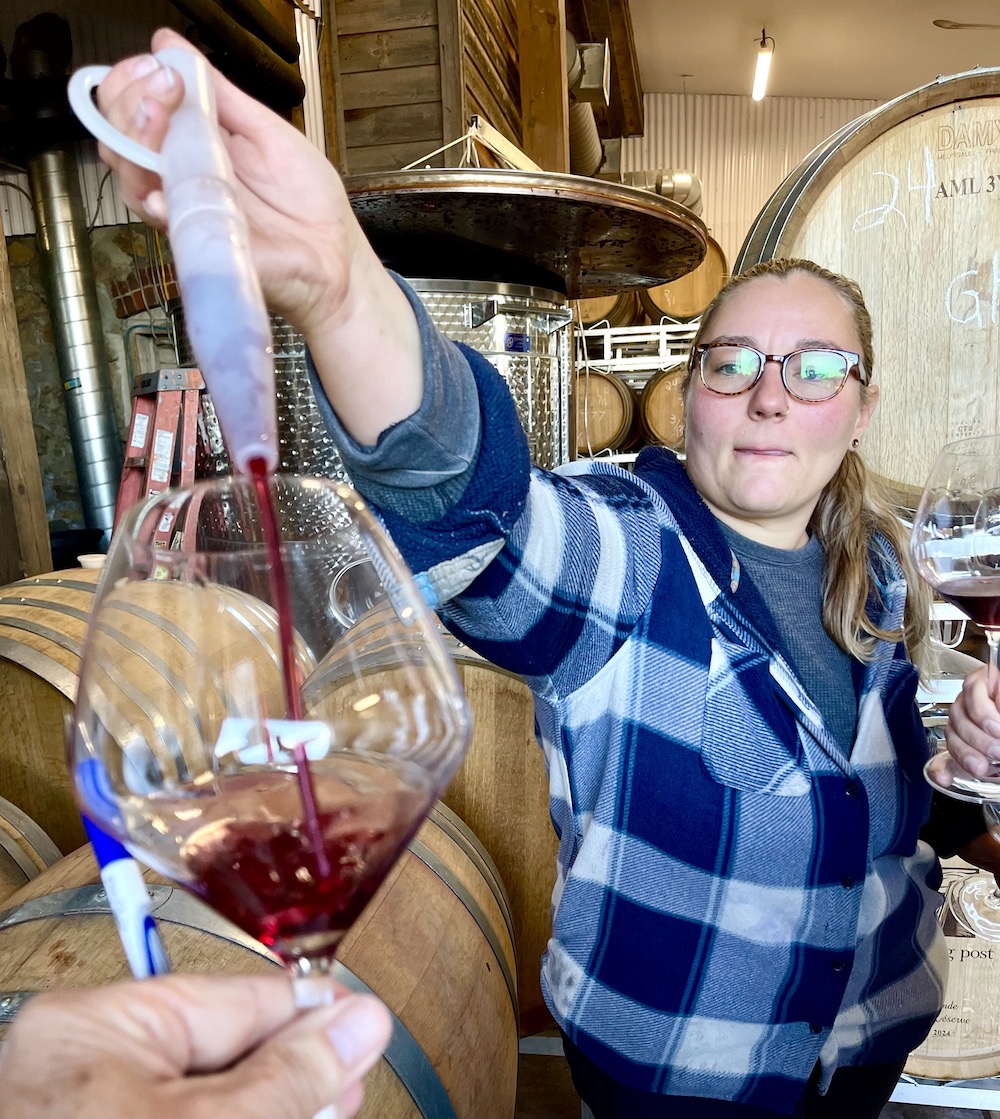
And that’s not all that all Leaning Post has taken on. Though the single-vineyard estate wines from the now established Senchuk Vineyard form the backbone of the winery’s growing portfolio, Senchuk has a proven track record sourcing grapes from key terroirs around Niagara. Some of his favourite vineyards to work with include Grimsby Hillside, just 800 meters away, Keczan (Lincoln Lakeshore), Hemeris (Beamsville Bench) and Bock (St. David’s Bench). All of these parcels bring interesting elements to table and widen the selection of wines available for consumers.
I have tasted with Ilya since he was the winemaker at Foreign Affair and just staring his virtual project consisting of single-vineyard Chardonnays, Pinot Noirs and Rieslings. He was one of the early adopters who, as a négociant, sought out key vineyards and terroirs that best expressed the grapes they grew. As the winemaker, Ilya has stayed true to the spirit of that philosophy but has added a new dimension — his own wine from his own vineyard, which he and Nadia prize above all.
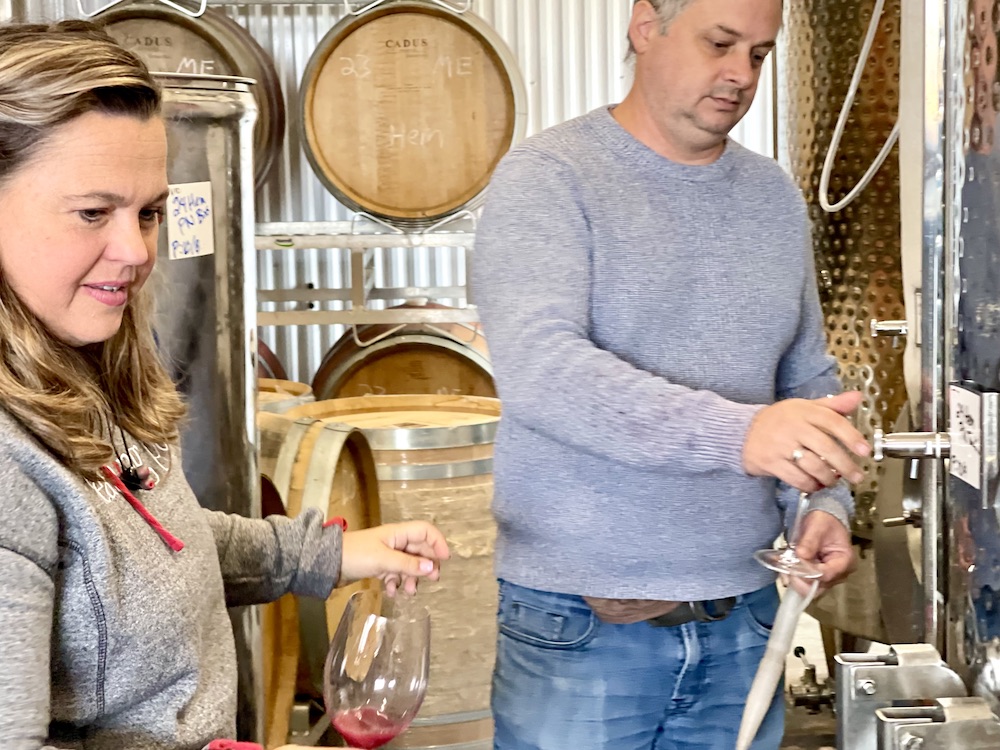
The portfolio is one of the most diverse you find in Niagara. Aside from his cherished Pinot Noirs and Chardonnays, Leaning Post has something for everyone, even if some of wines are from sourced vineyards. Riesling, traditionally made sparkling wine, Sauvignon Blanc, a natural wine series that includes orange wines, pet-nats and other “freaks and geeks”, Gamay (an estate version is coming), Bordeaux variety red wines, all the way up to the top proprietary red bottling, a multi grape blend called Cuveé Heritage, and Syrah all have a comfortable place at the Leaning Post table.
Ilya tends to go on geeky jags from time to time, bottling single-clone Chardonnays, or mixing and matching what he finds are complementary terroirs. And he’s not afraid to place his wines side by side with the sourced wines to allow consumers to taste for themselves the differences.
Another cool project that Ilya has been chasing for a few years, and one that I’ve have been following, is making the first single-variety Dolcetto, a black Italian wine grape variety widely grown in the Piedmont region of northwest Italy and rarely outside of there. Only one other planting of it is known in Ontario — a tiny bit at Hubbs Creek in Prince Edward County that goes into a field blend.

“Part of the fun of owning your own winery is experimenting,” Ilya told me in 2020. He spent months researching grapes that would do well in Niagara — cold hardy varieties that aren’t well known. He had several to choose from, but “I narrowed it down and had to choose what I liked … Dolcetto is interesting and not like Pinot Noir or Gamay and will work on our farm.
I was at Leaning Post as the second harvest of Dolcetto grapes were picked and processed this fall at the winery and was given my first barrel taste of the nearly finished first vintage of Dolcetto that consumers might see next year. It’s a fresh and lively wine with juicy dark berries and “weight wise, along the lines of Gamay,” said Ilya. He is still playing around with aging vessels while the 2023 vintage wine will go back into amphora for added aging before release.
I enjoyed an extensive tasting at Leaning Post with Ilya and Diana Sangster, vineyard manager and assistant winemaker. Some of the wines we tasted were released a while ago, some are just being released, or will be soon, and many, such as the 2020 wines are in short supply. To see what’s available or to purchase online go here. Leaning Post releases their wines in three tiers: Wine club gets first dibs, mailing list is next, and then consumers get their crack at them. Here’s is what I liked for the tasting:
The bubbles
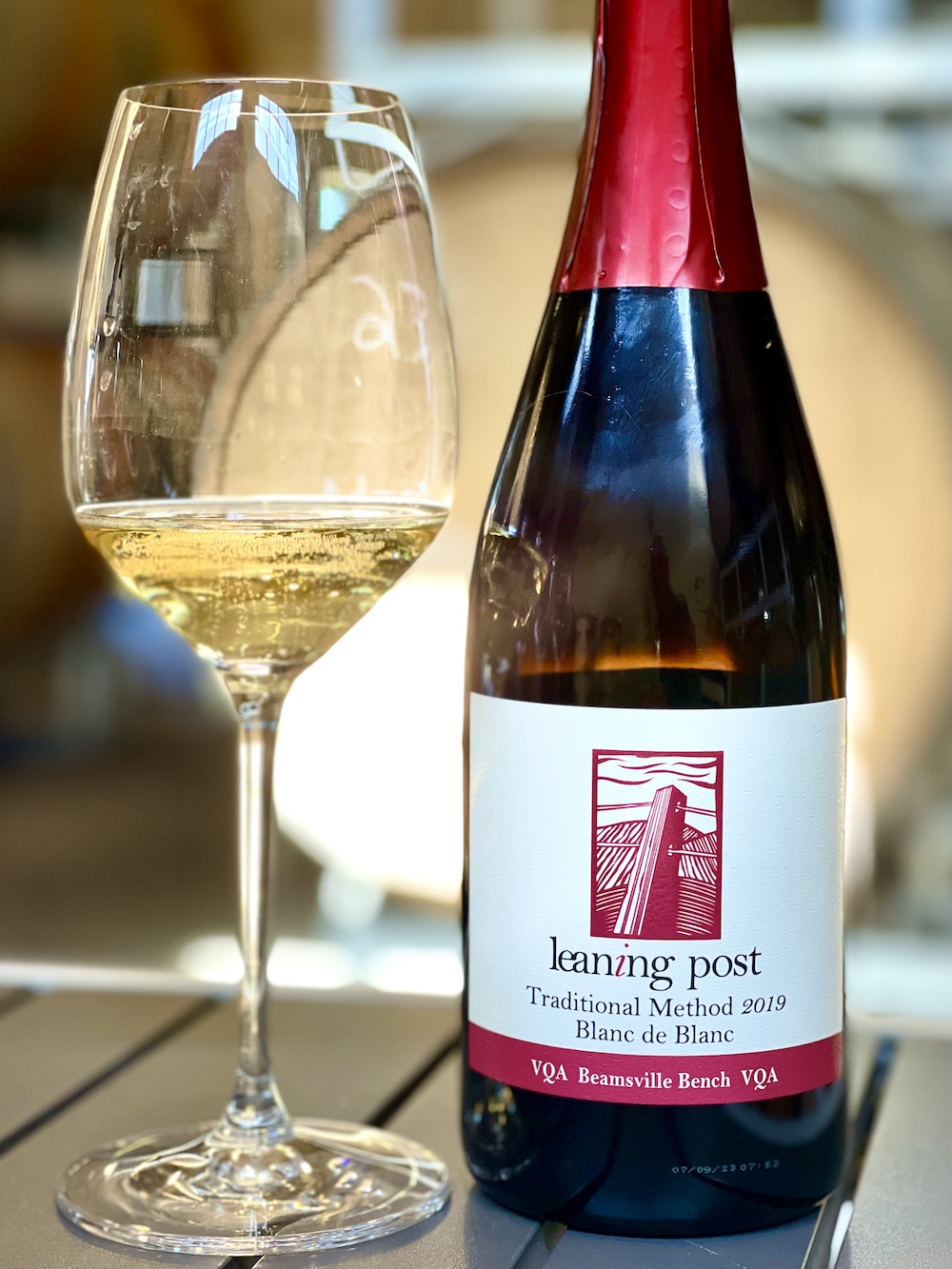
Leaning Post Traditional Method Blanc de Blanc 2019 ($55, 93 points) — The Hemeris Vineyard on the Beamsville Bench, which is a favourite farm of Senchuk’s, is a gem owned by the Kouvassilopoulos family. The over 40-year-old Chardonnay vines are the base for this traditionally made sparkling wine that spends six months in oaks barrels, with 42 months on the less, and a 6 g/l dosage. It shows a lovely golden colour in the glass with a lively bubbly. It starts with autolytic/biscuit notes on the nose followed by lemon curd, golden apple, pear, white flowers and brioche. The bead on the palate is vigorous with a rich, creamy, saline entry and just a hint of flint. It’s fresh and finessed with lemon tart, stone fruits, nutty accents, toasty brioche and mouth-watering acidity on the lifted, fresh finish.
The white wines

Leaning Post Grimsby Hillside Riesling 2021 ($27, 93 points) — It’s just so sad that Riesling has fallen so far from favour with consumers. Senchuk has been a champion of this super-star grape in Niagara since the early days of what was at one time his virtual brand. And he’s never given up on it, no matter how difficult it can be to sell. This expression from nearby Grimsby Hillside Vineyard is world class and is everything I love about this grape in Niagara. Senchuk stopped fermentation at 11 g/l RS and allowed for 11 months of lees aging. The enticing nose shows the full range of saline minerality, lanoline, grapefruit, empire apple, honeysuckle, savoury notes and a touch of ginger. The fresh vein of saline continues on the palate with peach pit, lime citrus, crisp apples, a touch of honeycomb and a vibrant, juicy finish. Can age through 2030.
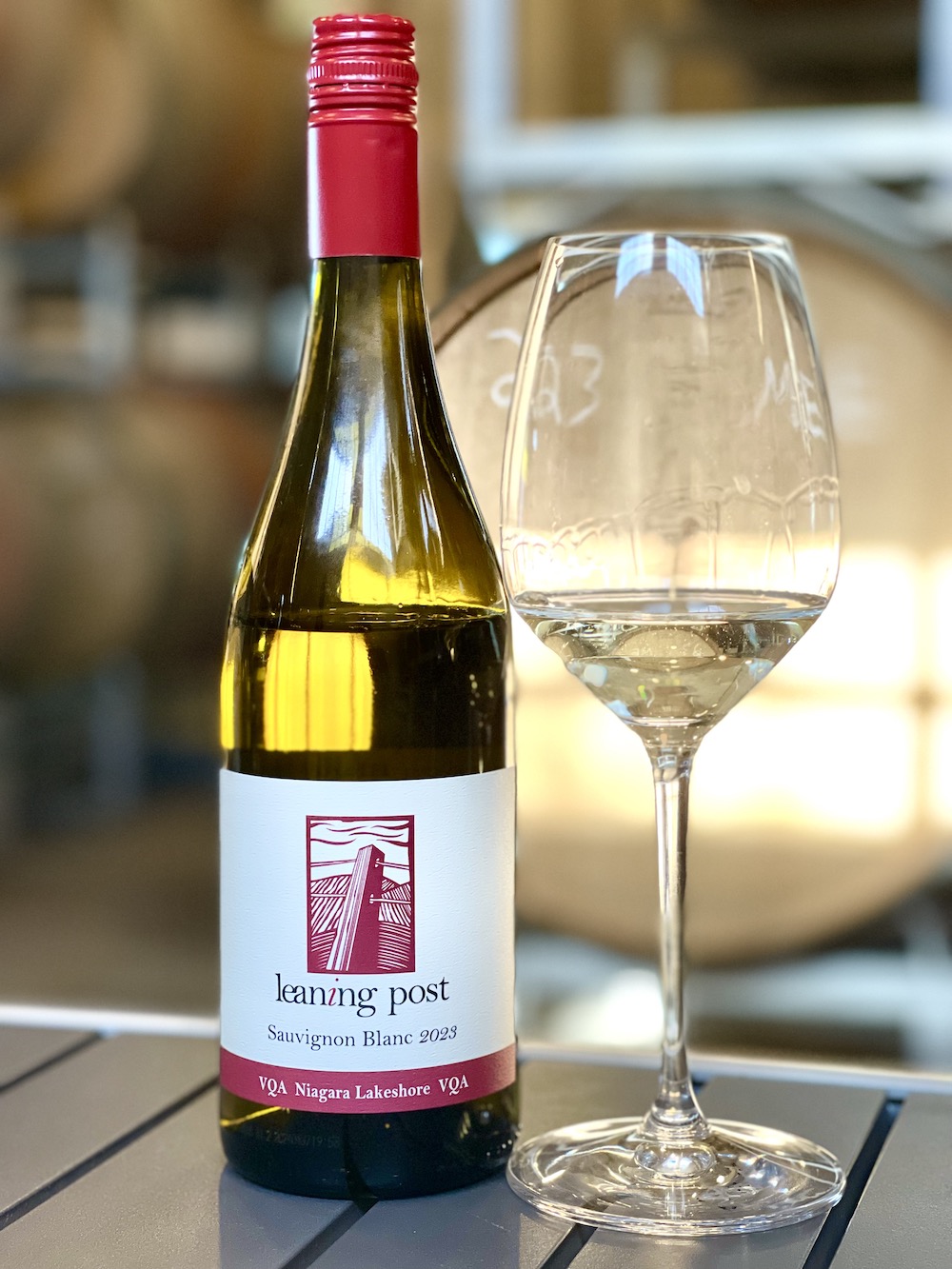
Leaning Post Sauvignon Blanc 2023 ($29, 91 points) — The Sauvignon Blanc grapes were sourced from the Niagara Lakeshore sub-appellation. The wine was split between two different vessels (neutral French oak barriques and stainless-steel tank) to be aged on its lees for 7 months. This is a more elegant style of savvy, compared to the racy, zippy examples from New Zealand. It has a nose of kiwi, mango, grapefruit, subtle garden herbs and spice notes. It has a lovely, creamy texture with tropical fruits, limes, grassy/herbaceous notes and a bright, finessed finish. Can drink this now and for the next couple of years.
The Chardonnays
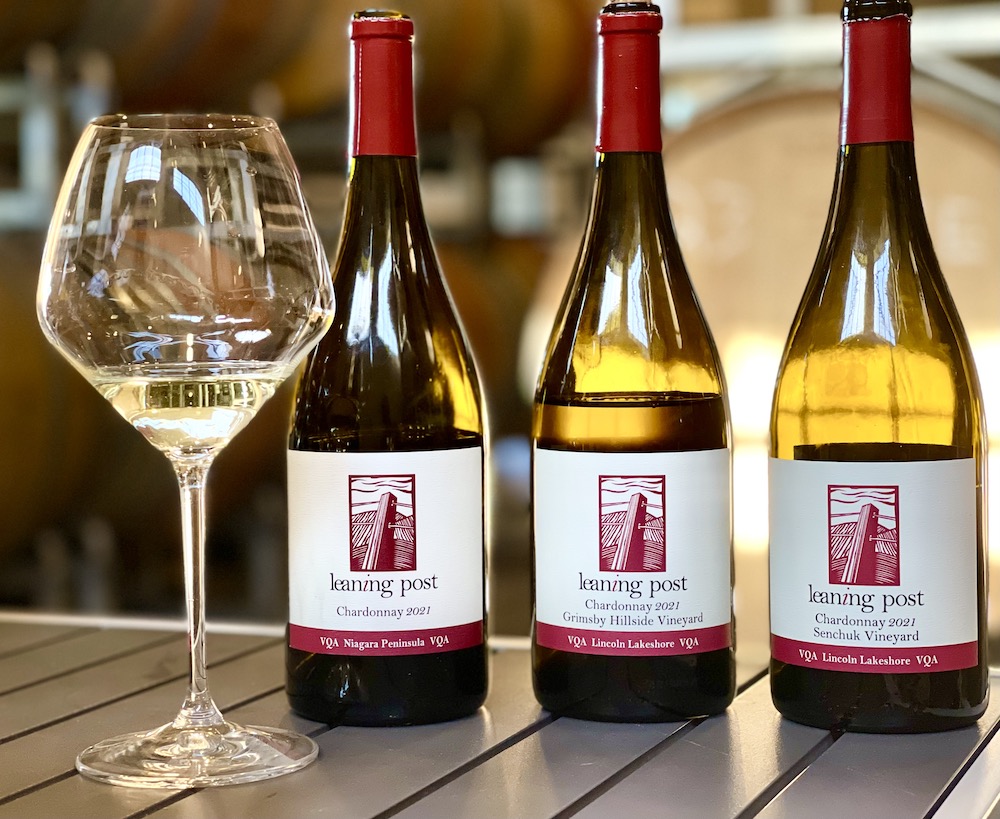
Leaning Post Chardonnay 2021 ($33, 92 points) — This Chardonnay is a blend of estate (Senchuk Vineyard) grapes and three different blocks from the Grimsby Hillside Vineyard across the road. The grapes were whole cluster pressed and parcels kept separate. The juice was allowed to settle prior to being racked to French oak barrels (25% new, 75% old) and aged for 10 months. “This is very much our style (for Chardonnay),” said Senchuk. “It gives people a typical, West Niagara vibe.” It shows ripe pear, wet stones and saline, some floral accents, peach pie, lemon and integrated spice notes. It has a rich and creamy texture on the palate with Bosc pear, yellow apples, ripe peach, wet stones, a touch of flint and spice with a finessed and long finish.
Leaning Post Grimsby Hillside Chardonnay 2021 ($52, 93 points) — This single-vineyard Chardonnay from the Frontier Block in the Grimsby Hillside Vineyard is sourced from two blocks with different Chardonnay clones: clone 76 and clone 96. The clones were kept separate throughout pressing and oak aging. The fruit was whole cluster pressed and allowed to settle for a couple of days before being put into barrel for spontaneous fermentation. The wine remained in French oak barriques on its lees for 15 months. This is much more subtle and elegant than the estate Chardonnay and shows overt minerality qualities such as seashells, flint and saline, then fresh pear, bergamot, lemon zest and savoury spices notes kick in as you swirl the wine in your glass. It shows pure elegance on the palate with lovely savoury (touch of reduction?) minerality, quince, lemon, subtle white peach and a big flinty, lifted and long finish. Can cellar through 2030.
Leaning Post Senchuk Vineyard Chardonnay 2021 ($57, 94 points) — Both clones in the estate vineyard — 76 and 96 — were hand-picked, hand-sorted and gently whole cluster pressed into separate tanks for cold settling. After two days, each clone was racked into puncheons and barriques for fermentation and aging in barrel for 17 months. The Senchuk Vineyard is only 800 meters away from Grimsby Hillside, but the Chardonnay shows a profile all its own. This is more opulent and expressive from the get-go (compared to Grimsby Hillside) with lemon cream, honey crisp apples, ripe pear, lemon curd, stony minerality and elegant spice notes. It has a luxurious texture on the palate with a melange of stone fruits, creamy notes, flint, wet stones, toasted almonds, lemon tart, integrated spice notes and a long, lifted finish. Can cellar through 2032.
Send in the clones
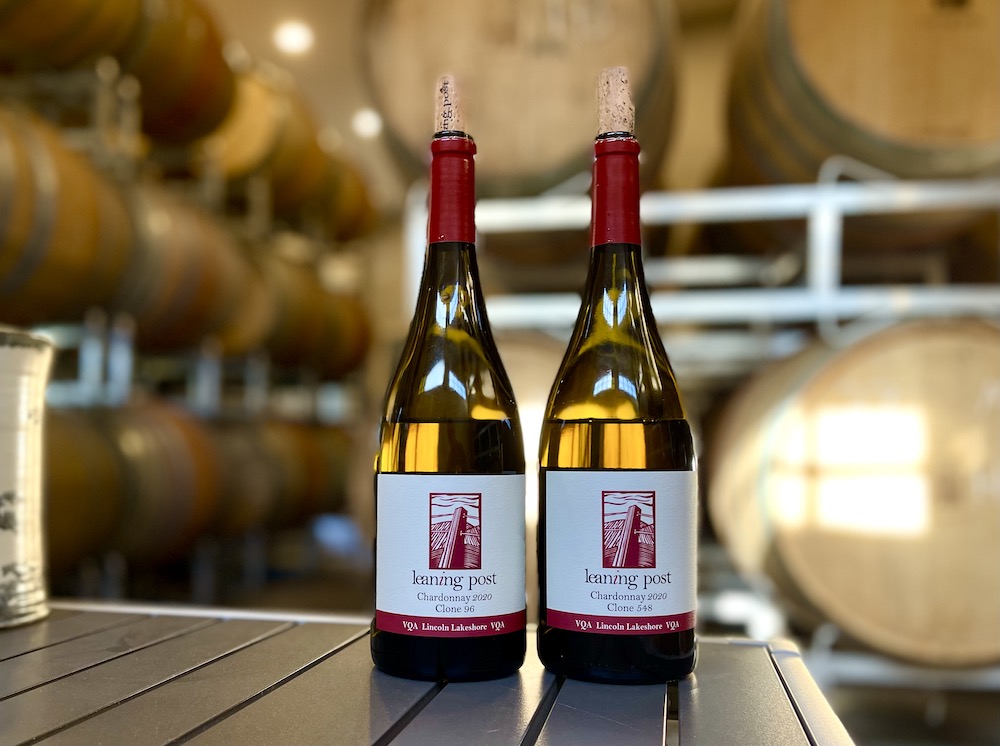
Senchuk is a clone geek, it’s in his DNA, and it always has been. He is one of the few winemakers in Niagara that was discussing the fascinating differences between clones way back in his virtual winery days, 15+ years ago. So, it’s no surprise he’s still at it, bottling single clone Chardonnays from his youthful terroir in West Niagara.
Leaning Post Chardonnay Clone 96 and the Clone 548 version 2020 ($52 each) — I did a speed tasting on both these wines. The juice from the Clone 96 was racked into barrels (2 puncheons, 2 barriques) for spontaneous alcoholic and malolactic fermentation, then aged in barrel for 18 months. The Clone 548 was also aged for 18 months after being racked into barrel (1 puncheon; 4 barriques) for alcoholic and malolactic fermentation. Clone 548, typically the backbone of Senchuk Vineyard Chardonnay, stands solo for the first time in this bottling and offers tropical fruits, floral notes and wet stone minerality. Clone 96 brings a vein of salinity, more citrus notes, floral accents and elegance. “I love these side by side,” said Senchuk, “they are so fascinating.”
The Pinot Noirs
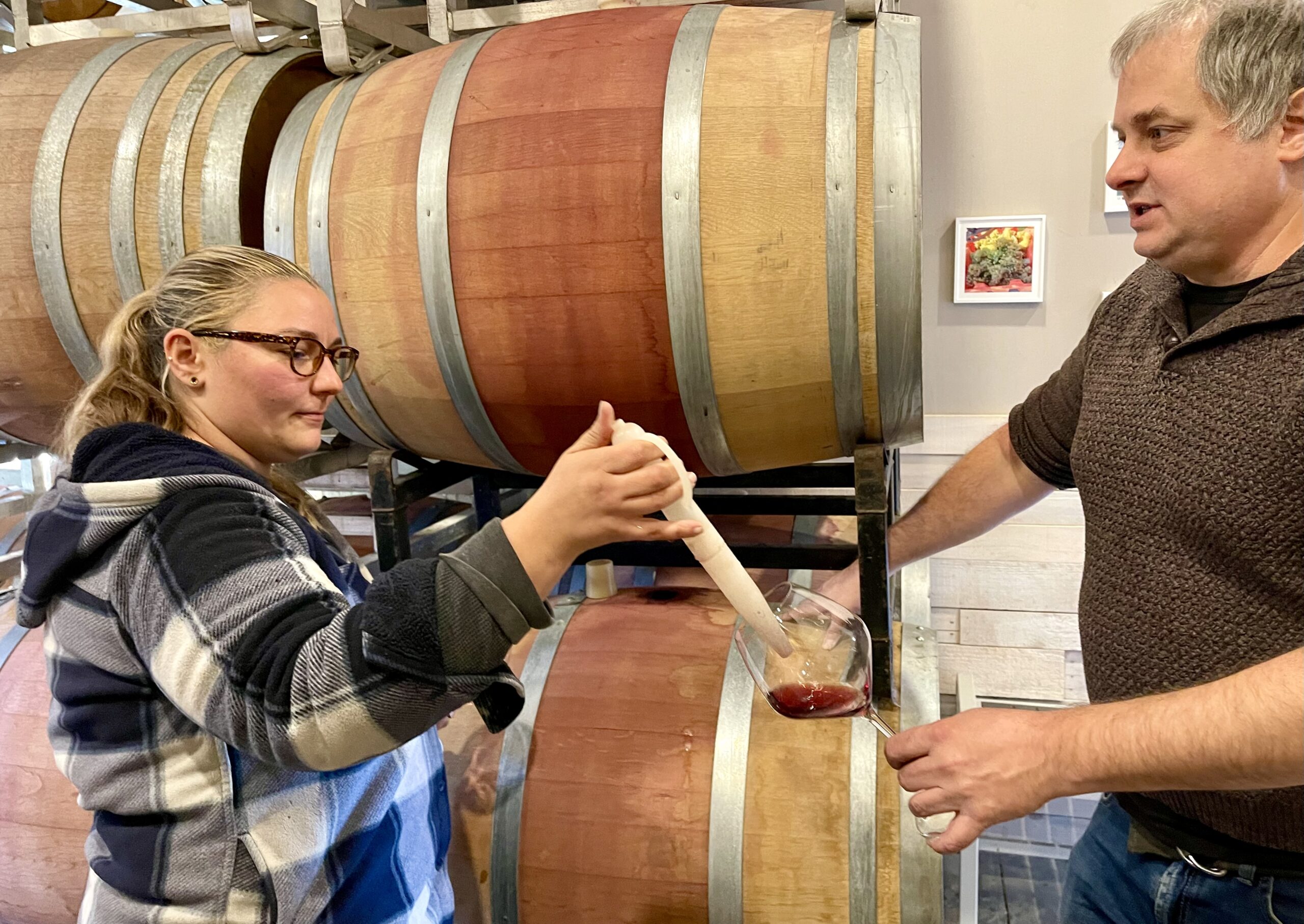
For Senchuk and Leaning Post, Pinot Noir is a priority, and it shows in the depth of the portfolio. “My Pinot philosophy is that 50% should be fruit and the other 50% should be tomacco,” said Senchuk, referring to those tomato leaf, dried tobacco, savoury, and umami characteristics that make Pinot Noir so interesting and complex. Senchuk also believes that he “can make something accessible without dumbing it down. That’s my No. 1 goal.” Here are the Pinots we tasted in our marathon session. Note: The 2020 Pinots are nearly all gone now, but a few cases of each remain.
Leaning Post Pinot Noir 2021 ($35, 92 points) — This Pinot Noir is a blend of fruit from three different vineyards from favourite appellations across Niagara. After being transferred to French oak barrels (25% new, 25% 1-year-old barrels, 50% older barrels) the wine is aged for 15 months. The nose shows a generous array of red berries, floral notes, earth and perfumed spice notes. It’s rich and savoury on the palate with brambly raspberries, ripe cherries, strawberries, tobacco, and spice on a silky-smooth finish that’s long and lifted.
Leaning Post Bock Vineyard Pinot Noir 2021 ($50, 93 points) — At the far-east of the St. David’s Bench sub-appellation lies Bock Vineyard. In many ways, it is the opposite of other vineyards utilized by Leaning Post Wines. The Niagara escarpment is lower and gently rolling there, and the vineyard is set back considerably further from Lake Ontario in the town of Niagara-on-the-Lake. Much less cooling influence from the lake, combined with heavier clay loam soil, and a gently sloped, south-facing aspect create a beautiful “bowl of sunshine,” said Senchuk. No new oak is used in the aging of this wine, which spends 15 months in barrels. It starts with earthy/savoury notes on the nose followed by brambly black raspberries, Morello cherries, cranberries, anise and integrated spices. It has lovely texture on the palate with smooth tannins to go with a ripe melange of red berries, dried tobacco, subtle herbaceous notes and spice on a lifted, finessed finish. Can cellar through 2032.
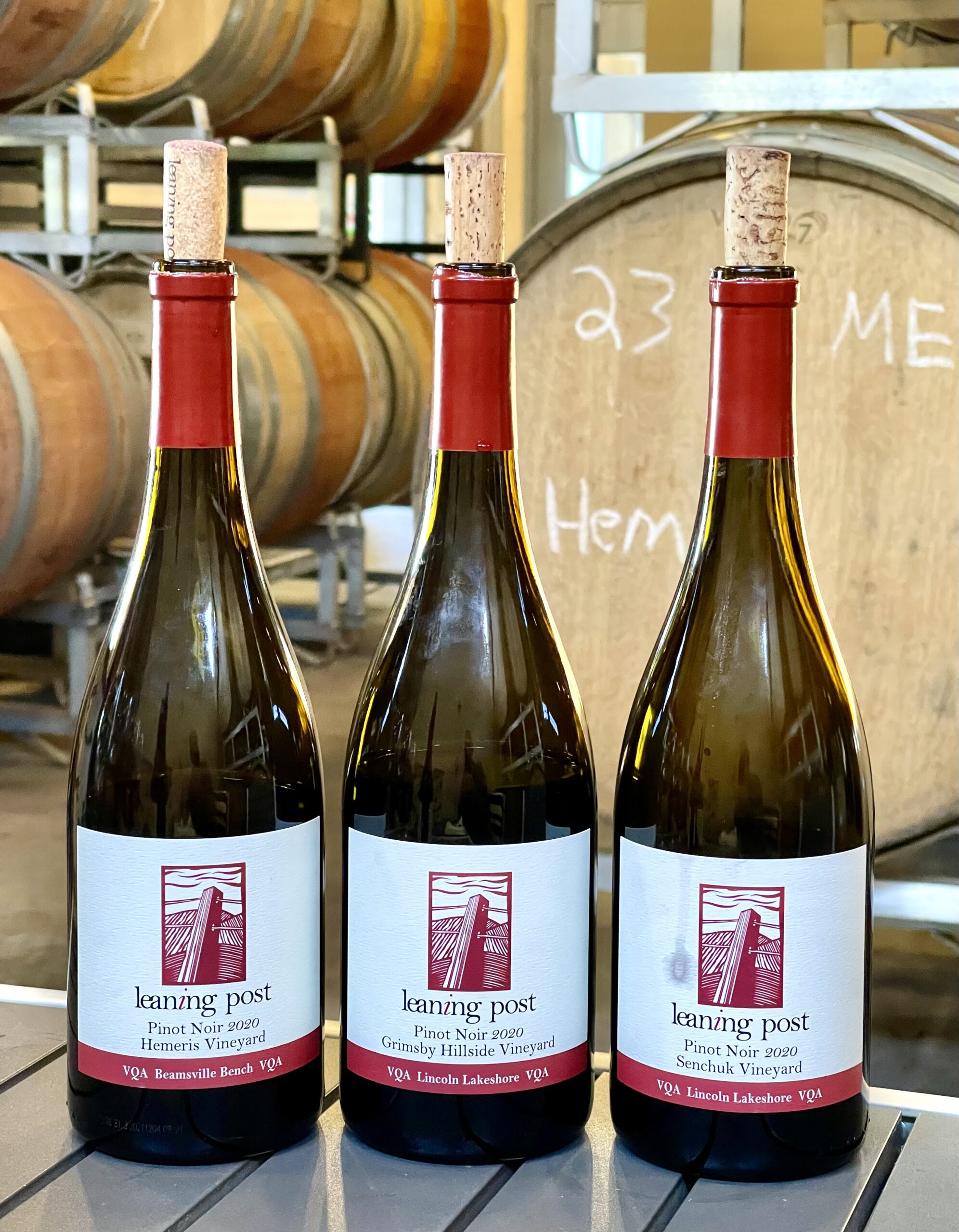
Leaning Post Hemeris Vineyard Pinot Noir 2020 ($55, 92 points) — This Beamsville Bench-sourced Pinot Noir was aged in French oak barrels (25% new, 25% 1-year-old, 50% older) for 18 months. The nose shows lovely floral/violet notes on the nose followed by pretty red berries, anise, some earthy/savoury accents, and a touch of leather and spice. The palate reveals a melange of earthy red berries, crunchy cranberries, some dried tobacco notes, savoury accents, chalky tannins and elegant spices on a long, fresh finish.
Leaning Post Grimsby Hillside Vineyard Pinot Noir 2020 ($60, 94 points) — The Grimsby Hillside Pinot was aged in French oak barrels (25% new, 25% 1-year-old, 50% older) for 15 months. The ripeness of the vintage shows on the nose with an array of meaty dark cherries, brambly black raspberries, cassis, dried Cuban tobacco, cocoa and rich spice notes. The tannins are ripe and grippy on the palate giving this Pinot Noir a profile that straddles both elegance and power. The meaty fruits show ripe cherries, wild raspberries, crunchy cranberries, some of that umami thing Senchuk talks about, spice and a certain bloody/iron minerality through a vibrant and lifted finish. Can cellar through 2030.
Leaning Post Senchuk Vineyard Pinot Noir 2020 ($75, 95 points) — The Senchuks had no clue what their land would yield when they purchased the property and planted grapes. It took four years to find out what they had and a few vintages after that before they knew they had found something special. This was aged in French oak barrels (25% new, 25% 1-year-old, 50% older) for 15 months. This Pinot continues to write the book on what the Senchuk Vineyard is all about, a unique expression that shows a bit more concentration than the Pinot above with super ripe black cherries, wild raspberries, a touch of blueberry and cassis, woodsy/earthy notes, subtle floral notes and spice. It has backbone on the palate with ripe tannins then dense red berries, anise, earthy/savoury notes, beetroot and herbs, fine oak spices and a long, long, lifted and finessed finish. Can cellar through 2032.
The red wines
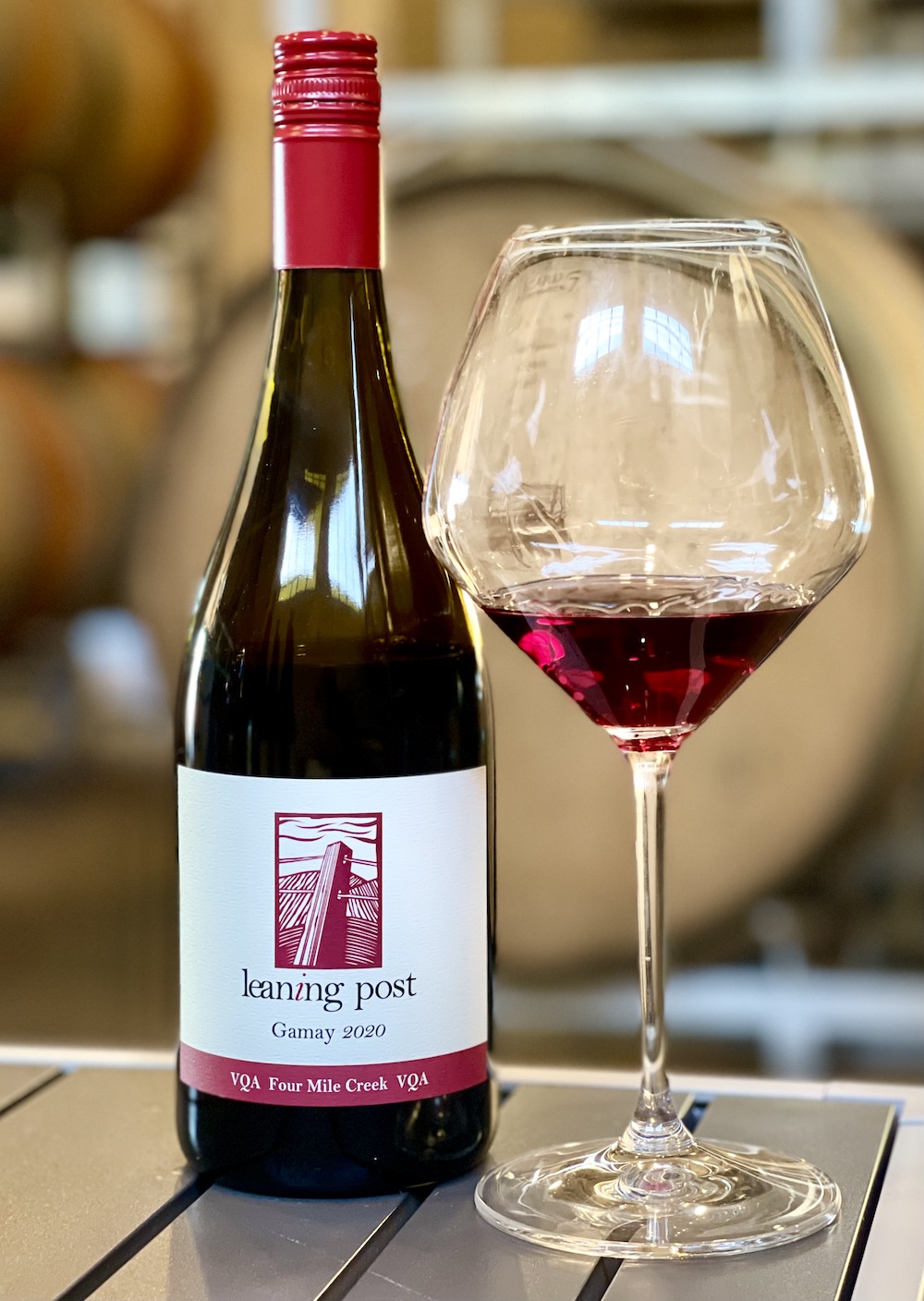
Leaning Post Keczan Vineyard Gamay 2020 ($26, 93 points) — The Keczan Vineyard slopes gently toward Lake Ontario at the base of the escarpment in Beamsville. While it is in the same sub-appellation as both Senchuk Vineyard and Grimsby Hillside Vineyard (Lincoln Lakeshore), its distance to the lake is greater, resulting in a noticeably warmer microclimate. It’s located in a little pocket off Highway 8 where Rhone varieties — Syrah, Viognier, and Marsanne (Kew, Keczan, Black Bank Hill and Mio Vineyard) — are finding success and building a Rhone Ranger reputation. The soil, a deep silt/clay loam enriched with gravel throughout, imparts distinctive characteristics to the grapes, resulting in wines of depth and complexity. After being transferred to French and American oak barrels, the wine was aged for 18 months. The nose shows an enticing array of black raspberries, purple plums, violets, black pepper, smoky/meaty notes and spice. The tannins sneak up on you and add structure and complexity to go with pure dark berries, ripe red fruits, cedar smoke, some stony notes, savoury accents and elegant spice accents on a long, velvety finish. You can age this through 2030.

Leaning Post Grimsby Hillside Cabernet Franc 2020 ($50, 93 points) — Such a beautiful and generous nose of cherry/kirsch, black currants, anise, olive paste, sweet herbs, dried tobacco leaf, ripe plums and spice. The berries are primarily of the dark kind on the palate with licorice, graphite, mulled herbs, ripe tannic structure and depth with finesse on a long finish. A gorgeous Cab Franc from a warm vintage. Can cellar through 2032.

Leaning Post Merlot 2020 ($50, Christmas release, 94 points) — The hits just keep on coming from the Bordeaux varieties which benefitted from the near-perfect growing season and long hang time in 2020. This Niagara Lakeshore Merlot is a wonder with intoxicating perfume on the nose followed by ripe raspberries and strawberries, purple plums, forest berries, floral notes and elegant spice notes. It has firm tannic structure on the palate that caresses the ripe and red and dark berries, cocoa, aniseed, fine oak spice notes on a finessed, lifted finish. A beauty that can cellar through 2024.
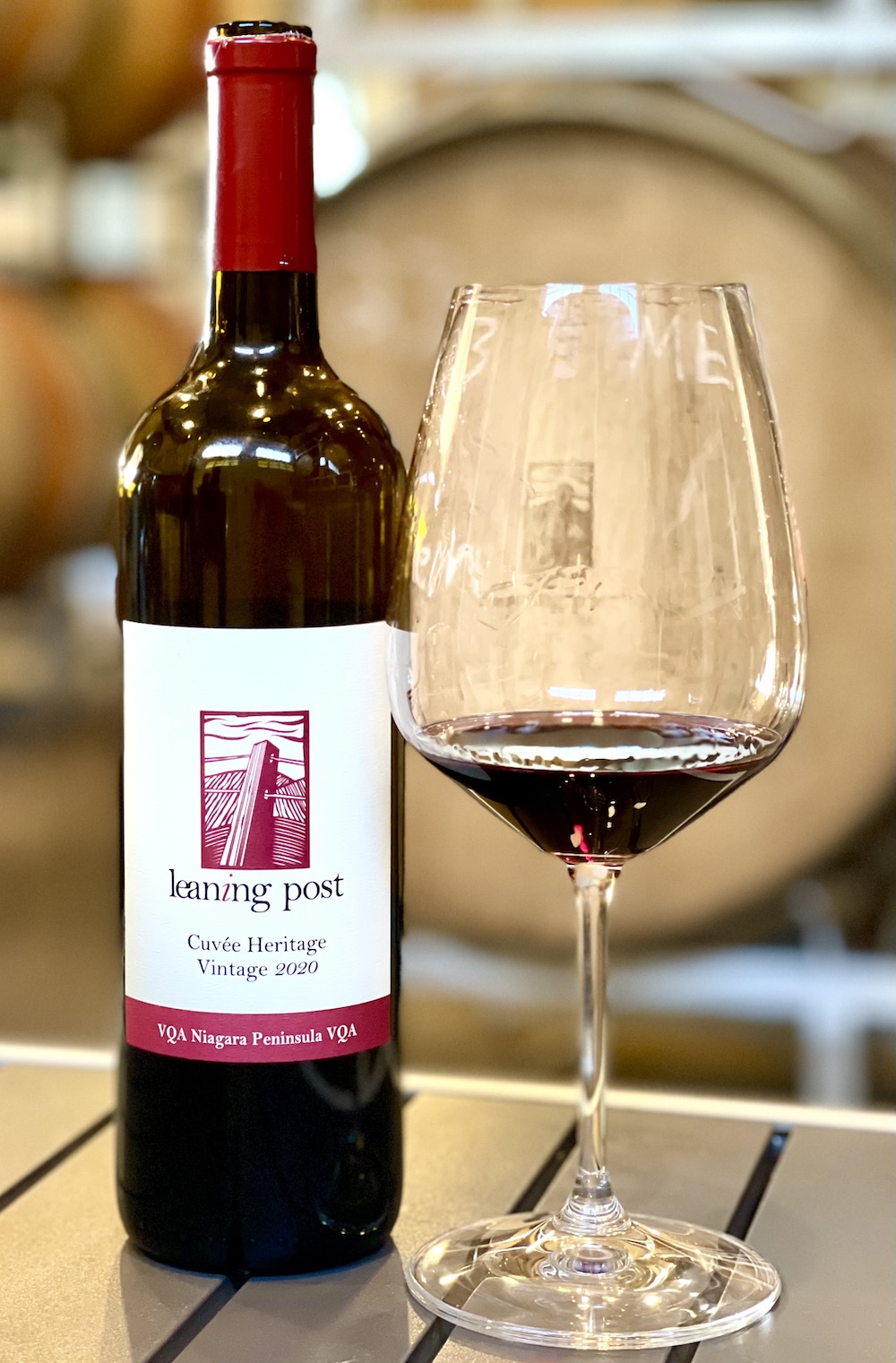
Leaning Post Cuveé Heritage 2020 ($75, 94 points) — Cuvée Heritage is the third vintage of Leaning Post’s flagship red blend, but the first called Heritage – in homage to Ilya and Nadia’s Ukrainian heritage, and with an intention of building a heritage of “tremendous red blends at the estate.” The blend is Cabernet Sauvignon (29%), Syrah (27%), Cabernet Franc (25%) and Merlot 18%. The various components were aged separately in barrel for 20 months. It’s an extraordinary blend that grabs your full attention from the start with a nose of generous black currants, blackberries, figs, smoky red berries, meaty/peppery notes and fine oak spices. There’s a lovely savoury edge on the palate with a wall of ripe tannins and the full spectrum of generous red and dark berries, smoky/meaty notes, red and black peppercorns all leading to an echoing, long and finessed finish. Big time cellar wine that will keep evolving for a decade or more.
The post A deep dive into the wildly diverse portfolio from Niagara’s Leaning Post appeared first on Wines In Niagara.








